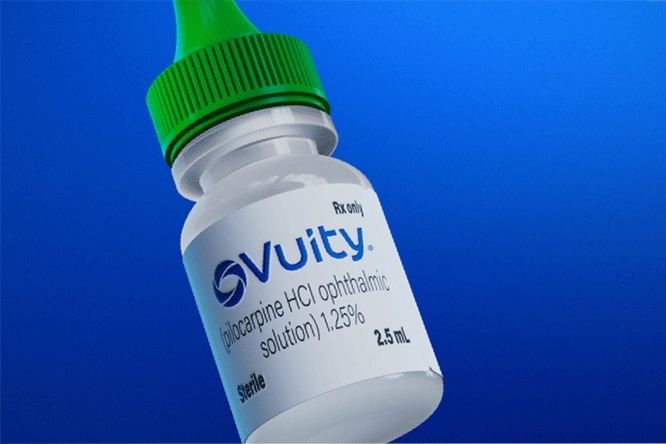
Pharmacokinetics
Glucocorticoids are a class of steroid hormones that are primarily produced in the adrenal cortex. Their pharmacokinetics involve absorption, distribution, metabolism, and excretion (ADME).
- Absorption: Glucocorticoids can be administered via various routes including oral, intravenous (IV), intramuscular (IM), subcutaneous (SC), and inhalational. Oral glucocorticoids are rapidly absorbed from the gastrointestinal tract, with peak plasma concentrations typically occurring within 1-2 hours after ingestion.
- Distribution: Once in the bloodstream, glucocorticoids are highly protein-bound, primarily to corticosteroid-binding globulin (CBG) and albumin. This binding affects their bioavailability and half-life. The volume of distribution varies among different glucocorticoids; for example, dexamethasone has a larger volume of distribution compared to hydrocortisone.
- Metabolism: Glucocorticoids undergo hepatic metabolism primarily through cytochrome P450 enzymes. The metabolic pathways can lead to active or inactive metabolites depending on the specific glucocorticoid used.
- Excretion: The metabolites of glucocorticoids are excreted mainly through urine. The half-lives of glucocorticoids vary significantly; for instance, hydrocortisone has a short half-life (~8-12 hours), while dexamethasone has a longer half-life (~36-54 hours).
Mechanism of Action
Glucocorticoids exert their effects by binding to the glucocorticoid receptor (GR), which is present in almost all tissues. This receptor-ligand complex translocates to the nucleus where it influences gene expression:
- Transactivation: The GR complex promotes the transcription of anti-inflammatory proteins such as lipocortin-1, which inhibits phospholipase A2 and subsequently reduces arachidonic acid release—leading to decreased production of inflammatory mediators like prostaglandins and leukotrienes.
- Transrepression: Conversely, glucocorticoids inhibit the expression of pro-inflammatory genes by interfering with transcription factors such as NF-kB and AP-1, further reducing inflammation.
The overall effect is a potent anti-inflammatory response that is utilized in treating conditions such as asthma, rheumatoid arthritis, and autoimmune diseases.
Adverse Reactions
While glucocorticoids are effective therapeutic agents, they are associated with a range of adverse reactions due to their broad physiological effects:
- Metabolic Effects: Long-term use can lead to hyperglycemia and increased risk of diabetes mellitus due to gluconeogenesis stimulation.
- Musculoskeletal Effects: Prolonged therapy may cause osteoporosis due to decreased bone formation and increased bone resorption leading to fractures.
- Gastrointestinal Effects: There is an increased risk for peptic ulcers and gastrointestinal bleeding especially when combined with non-steroidal anti-inflammatory drugs (NSAIDs).
- Cardiovascular Effects: Chronic use may contribute to hypertension due to sodium retention and increased blood volume.
- Psychiatric Effects: Patients may experience mood swings, anxiety, or depression; some may develop steroid-induced psychosis.
- Endocrine Effects: Suppression of the hypothalamic-pituitary-adrenal (HPA) axis can occur with long-term use leading to adrenal insufficiency upon abrupt withdrawal.
- Infection Risk: Immunosuppression caused by glucocorticoids increases susceptibility to infections.
In summary, while glucocorticoids play a crucial role in managing various inflammatory conditions through their pharmacokinetic properties and mechanisms of action, they also carry significant risks for adverse reactions that must be carefully managed during treatment.
Synthetic Analogs and Routes of Administration
Synthetic glucocorticoids are man-made versions of the naturally occurring steroid hormones produced by the adrenal glands. These synthetic analogs are designed to mimic the effects of cortisol, a key hormone involved in regulating inflammation, immune response, and metabolism. Due to their potent anti-inflammatory and immunosuppressive properties, synthetic glucocorticoids are widely used in clinical practice to treat various conditions such as autoimmune diseases, allergies, asthma, and certain cancers.
Examples of Synthetic Glucocorticoids
Some commonly prescribed synthetic glucocorticoids include:
- Prednisone: Often used for its anti-inflammatory effects in conditions like arthritis and lupus.
- Dexamethasone: Known for its strong anti-inflammatory properties; frequently used in cancer treatment and severe allergic reactions.
- Hydrocortisone: Used for adrenal insufficiency and as an anti-inflammatory agent.
- Methylprednisolone: Commonly used for inflammatory conditions and as part of chemotherapy regimens.
- Budesonide: Often administered via inhalation for asthma or as a topical treatment for inflammatory bowel disease.
These drugs can vary significantly in their potency, duration of action, and side effect profiles.
Routes of Administration
The route of administration for synthetic glucocorticoids can greatly influence their effectiveness and side effects. Here are the primary routes through which these medications can be administered:
- Oral Administration:
- Many synthetic glucocorticoids like prednisone and methylprednisolone are available in oral forms (tablets or liquid). This route is convenient for outpatient management of chronic conditions but may lead to systemic side effects due to widespread absorption into the bloodstream.
- Topical Administration:
- Topical formulations (creams, ointments) are commonly used for skin conditions such as eczema or psoriasis. This localized application minimizes systemic absorption, thereby reducing potential side effects while effectively treating inflammation at the site.
- Inhalation:
- Inhaled glucocorticoids (e.g., budesonide) are primarily used in managing asthma and chronic obstructive pulmonary disease (COPD). This method allows direct delivery to the lungs, providing rapid relief from airway inflammation with fewer systemic effects compared to oral administration.
- Intravenous (IV) Administration:
- IV glucocorticoids like dexamethasone may be utilized in acute settings such as severe allergic reactions or during surgery when rapid action is required. This route ensures immediate availability in the bloodstream.
- Intramuscular (IM) Injection:
- Some glucocorticoids can be administered via IM injection for longer-lasting effects. This method is often employed when oral administration is not feasible or when a sustained release is desired.
- Nasal Administration:
- Nasal sprays containing glucocorticoids are effective for treating allergic rhinitis by delivering medication directly to the nasal mucosa, thus minimizing systemic exposure while targeting local inflammation.
Each route has its advantages and disadvantages regarding onset of action, duration of effect, convenience, and risk of side effects. The choice of administration depends on the specific condition being treated, patient preferences, and clinical considerations.
In summary, synthetic glucocorticoids play a crucial role in managing various inflammatory and autoimmune conditions through multiple routes of administration that optimize therapeutic outcomes while attempting to minimize adverse effects.
Rationale for Replacement Therapy
Glucocorticoid replacement therapy is essential for individuals suffering from adrenal insufficiency, a condition characterized by inadequate production of steroid hormones from the adrenal glands. The rationale for this therapy can be understood through several key points:
- Physiological Hormone Replacement: The primary goal of glucocorticoid replacement therapy is to mimic the natural secretion of cortisol, which plays a crucial role in various physiological processes, including metabolism, immune response regulation, and stress management. In patients with adrenal insufficiency, the lack of adequate cortisol can lead to severe metabolic disturbances and an inability to respond appropriately to stressors.
- Prevention of Adrenal Crisis: Patients with adrenal insufficiency are at risk of experiencing an adrenal crisis, a life-threatening condition that occurs when the body is under significant stress (such as illness or injury) and cannot produce sufficient cortisol. Glucocorticoid replacement helps maintain adequate hormone levels to prevent such crises.
- Management of Symptoms: Symptoms associated with adrenal insufficiency include fatigue, weakness, weight loss, low blood pressure, and electrolyte imbalances (such as hyponatremia and hyperkalemia). By providing glucocorticoids like hydrocortisone or prednisone, clinicians can alleviate these symptoms and improve the overall quality of life for patients.
- Restoration of Homeostasis: Glucocorticoids are vital for maintaining homeostasis in the body. They influence carbohydrate metabolism by promoting gluconeogenesis and glycogenolysis in the liver while also affecting fat metabolism and protein catabolism. Replacement therapy helps restore these metabolic functions that are disrupted in adrenal insufficiency.
- Circadian Rhythm Considerations: Cortisol secretion follows a diurnal rhythm, peaking in the early morning and declining throughout the day. Traditional glucocorticoid therapies often struggle to replicate this natural pattern due to their pharmacokinetics. However, recent advancements in modified-release formulations aim to better mimic this circadian rhythm, enhancing therapeutic outcomes.
- Long-term Health Outcomes: Adequate glucocorticoid replacement has been shown to reduce morbidity associated with untreated adrenal insufficiency. Studies indicate that patients receiving appropriate hormone replacement have improved survival rates compared to those who do not receive treatment.
- Emerging Therapies: Ongoing research into alternative delivery methods (such as continuous subcutaneous infusion) and new formulations aims to enhance patient adherence and optimize therapeutic effects while minimizing side effects associated with traditional oral glucocorticoids.
In summary, glucocorticoid replacement therapy is critical for managing adrenal insufficiency due to its role in restoring hormonal balance, preventing acute crises, alleviating symptoms, and improving long-term health outcomes.







